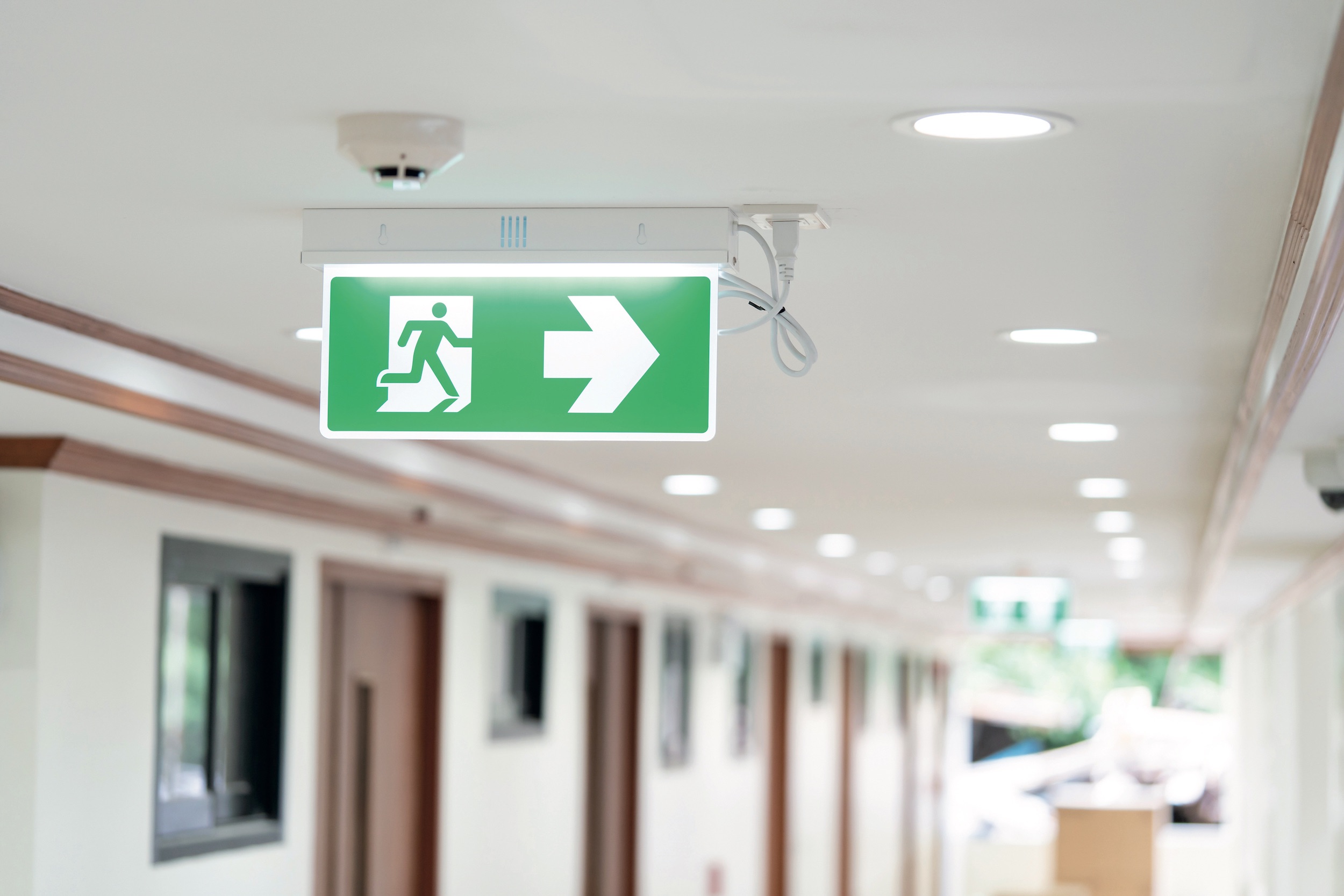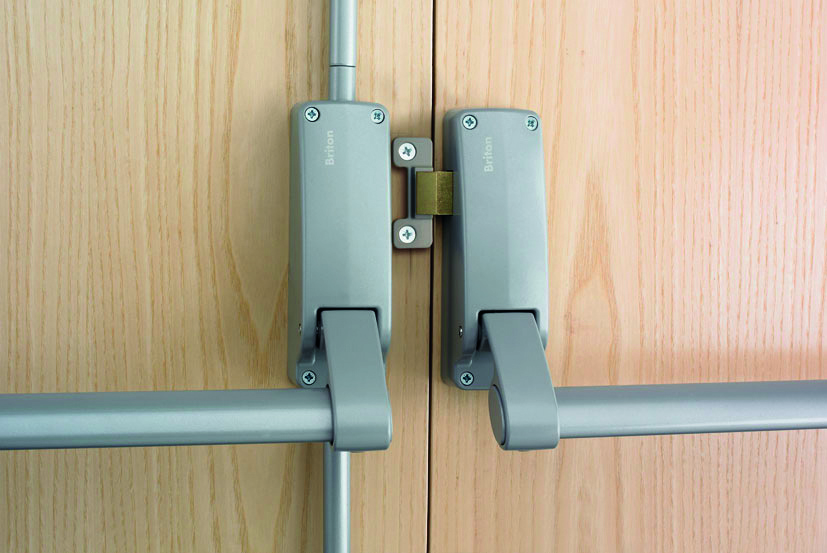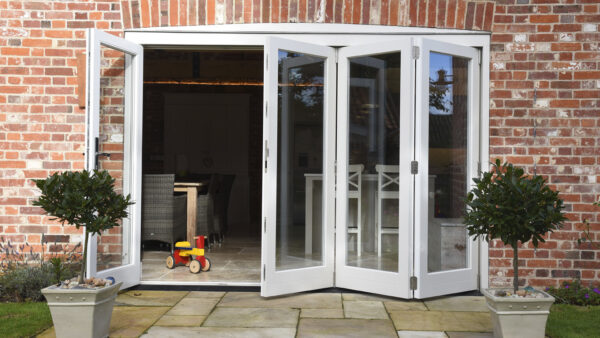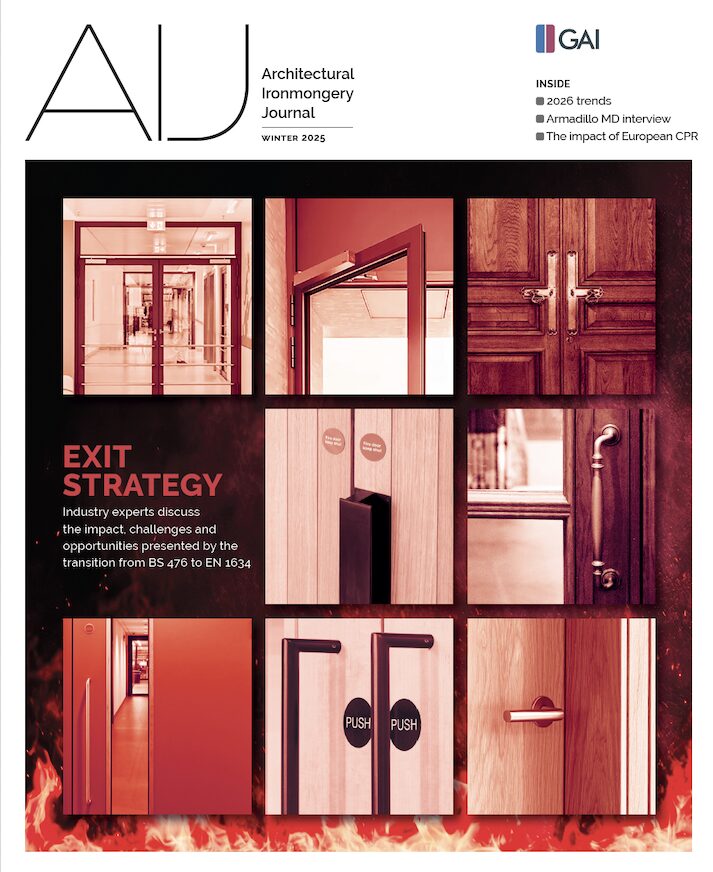Sue Corrick of Allegion UK reviews the critical nature of escape routes in school buildings and how fire door hardware plays a role in keeping students safe and emergency exits functional.

Whether it’s the end of the day or end of term, when schools close, it’s not unusual to see children and staff alike scrambling out the doors as they head for a much needed period of relaxation. Though, more vital than finding an exit for a break is the need to safely and swiftly evacuate school premises when an emergency situation arises.
When fire breaks out in a school building, every second counts. Panic and emergency escape routes provide a direct path to safety and are critical in minimising risk and the time spent evacuating, and as a result, are highly regulated in educational facilities as per the Regulatory Reform (Fire Safety) Order 2005 and the Building Bulletin 100 (BB100). Accordingly, designated panic and emergency routes must be highlighted with concise signage, remain clear at all times and contain fully compliant and operational fire exit doors – which are recognised as the final point of escape.
During term time, when a school is at its busiest, staff, students and visitors must be confident in locating and traversing their nearest emergency exit route at any given time. Regular fire drills, evacuation plans and staff training can play a critical part in ensuring the effective use of escape routes in schools, though, often overlooked is the important detail of exit hardware. Where neglected routes can turn a manageable emergency into a potentially dangerous situation, duty holders are urged to recognise the importance of functional fire exits and how exit hardware keeps them operational.
Unique challenges and solutions
School buildings are often more complex than they first appear. Between sprawling corridors, high-traffic communal areas and frequent transitions between classrooms, halls and outdoor areas, there are various challenges and vulnerabilities to consider when it comes to fire safety and the accessibility of escape routes.
Fire is an unpredictable danger for any facility, made more apparent in school buildings by the presence of flammable materials – such as art supplies, paper and chemical substances in science labs, for example. In some schools, arson also remains a real concern, further elevating the chance of fire and reinforcing the need for effective emergency escape routes and operational fire exit doors. In any case, escape routes must not only be compliant but robust enough to support an orderly evacuation under duress, and for that, correctly specified, installed and maintained fire exit hardware is key.

In panic situations, particularly where children are involved, ease of use and reliability are fundamental. For schools, where there are usually more than 60 occupants present, panic exit hardware is a typical installation on fire exit doors, with horizontal push bars and pads used for intuitive egress at the end of escape routes. These panic devices are designed to provide safe and effective escape through doorways with minimum effort and without prior knowledge of operation. Horizontal push bars for example, are often utilised on external outward opening doors, with panic hardware required to cover at least 60% of the door width, ensuring devices are easy to find and operate in an emergency. All panic exit devices must also be fitted to comply with the harmonised version of EN 1125 Panic and EN 179 Emergency standards and ensure UKCA and CE markings are present.
Plan to protect
Far too often, escape routes are compromised in school buildings as a result of poor planning and a lack of fire exit maintenance. Where insufficient signage, blocked exit routes and untrained staff are common oversights that can severely impact the effectiveness of emergency exits, poorly maintained exit hardware could be the difference between safe escape and disaster.

The durability of exit hardware is regularly put to the test in school buildings, with wear caused by high footfall, heavy usage and vandalism. With this in mind, a duty holder or responsible person (often the headteacher or facility manager) is required to perform regular fire risk assessments to ensure appropriate precautions are in place to safeguard pupils and staff. As part of their duties, it is recommended that maintenance checks are conducted on a regular basis on escape routes and that all fire door hardware is in correct working order, ensuring all components are present, in satisfactory working condition and operate as follows:
- When the horizontal bar is pushed, it should unlatch the door immediately without requiring a key, knob or other tools. The mechanism should be intuitive and require minimal force to open. Once operated, the door should also return to its original position.
- Pushing the bar should release the latch and or bolts, allowing the door to swing open freely, facilitating rapid evacuation.
- The hardware should normally be latched to prevent unauthorized entry from the outside. A door may be locked from the outside with a key or locking device, but from the inside should always be operable without a key.
- Some panic bar models may include alarms or signals when the door is opened in an emergency or may have an optional dogging feature to keep the door open temporarily.
- Hardware must meet local building and fire safety codes. Typically, it should be rated for a certain number of cycles and withstand specific forces. When on fire doors, hardware should also hold a fire rating.
Worn or faulty panic hardware can delay an exit door from opening or may simply cause the door to fail entirely, rendering a carefully planned and clear escape route useless in the event of a fire. In any case, should a fire door not be operating as intended, it’s imperative that a school’s responsible person seek out professional advice to ensure maintenance is carried out quickly and professionally, especially when children are present.
Schools will always be thought of as places of learning, care and responsibility, and with that there is an ongoing duty to protect the lives of our next generation and those who nurture them. To truly mitigate the risk of fire, responsible parties must work together to guarantee safe egress is possible at all emergency exits by specifying, installing and maintaining appropriate hardware fit to meet the demands of school settings. After all, an escape route is only as reliable as the exit hardware found throughout it.








